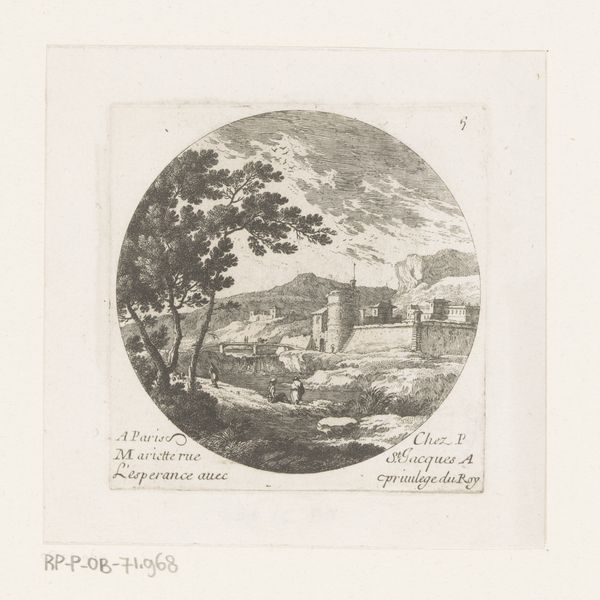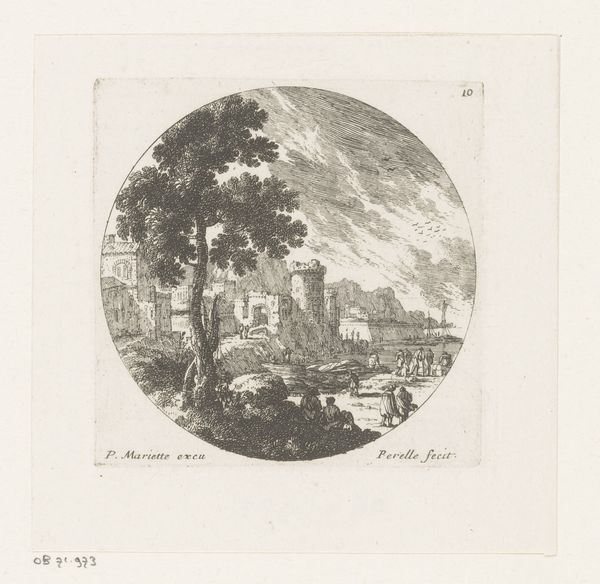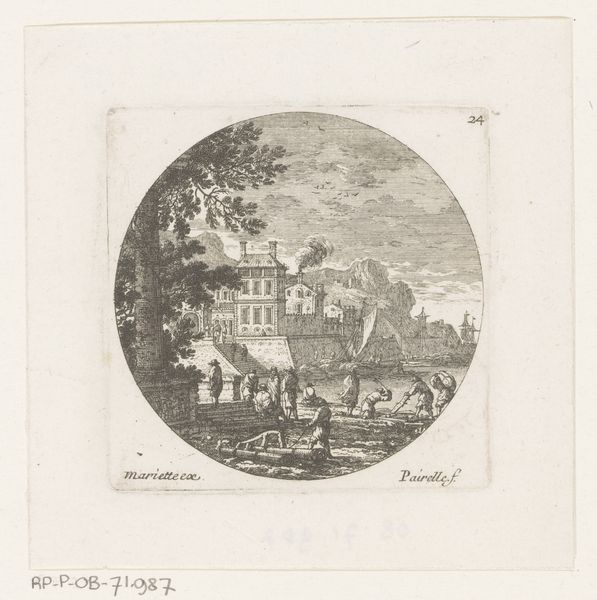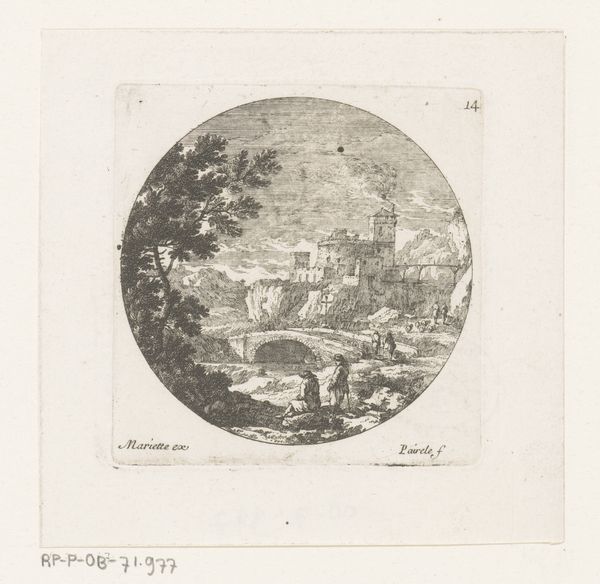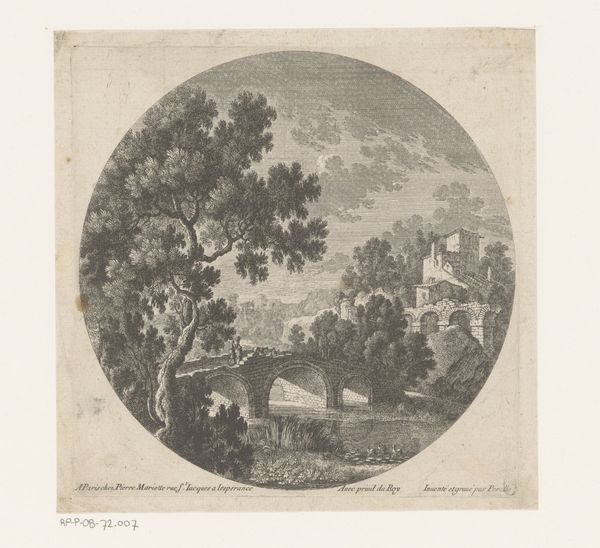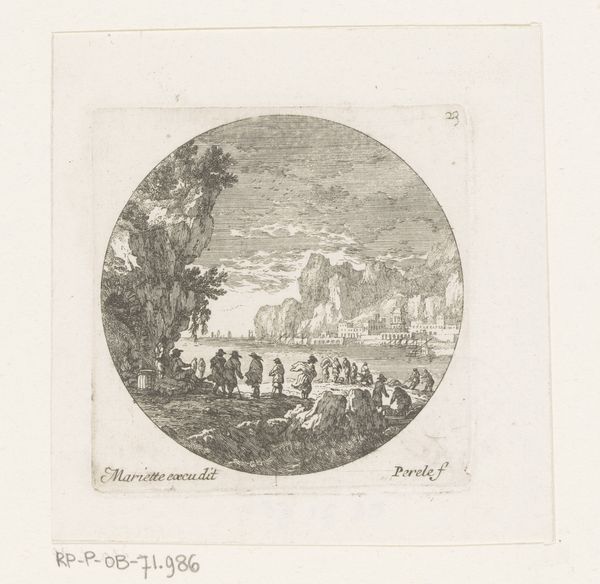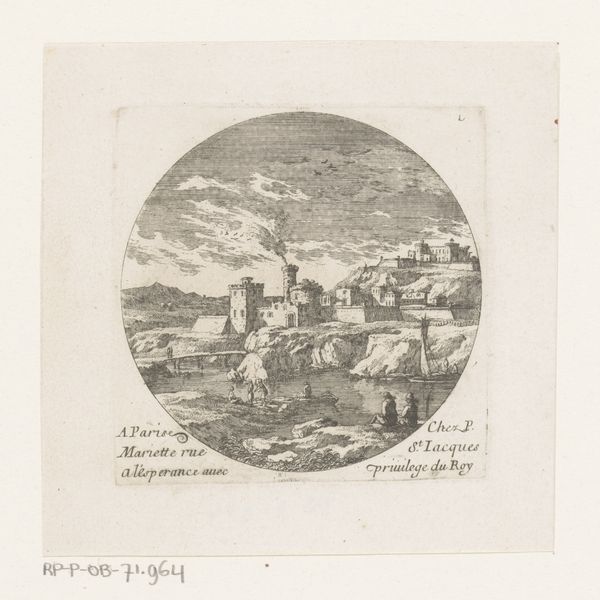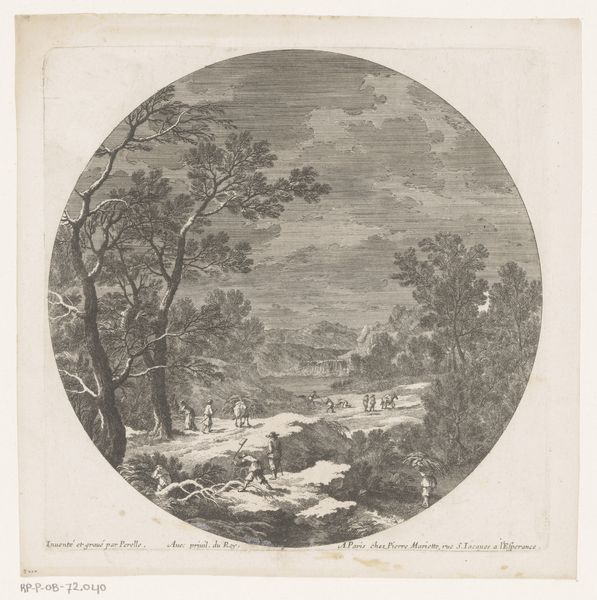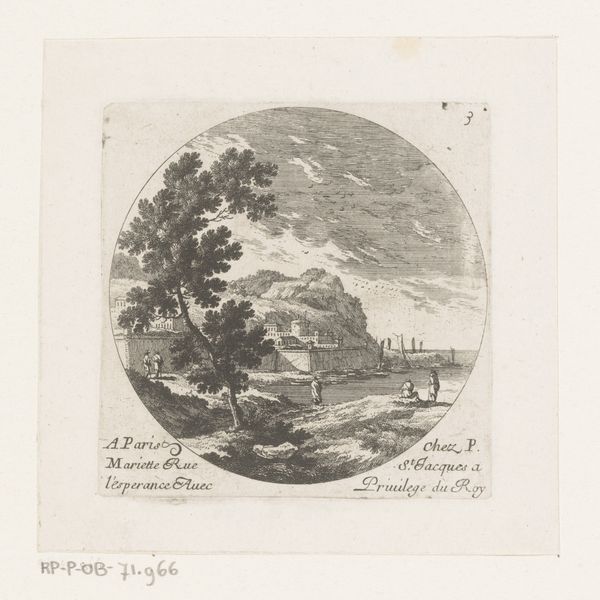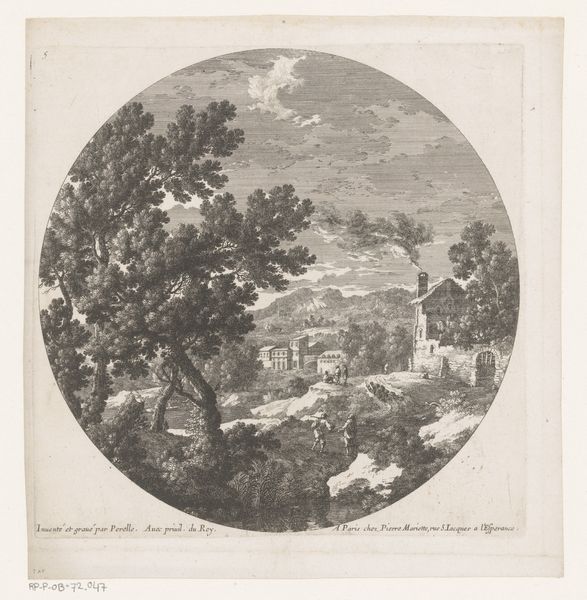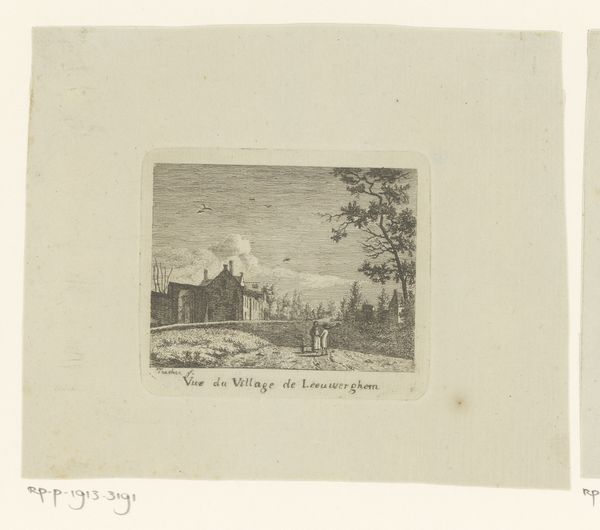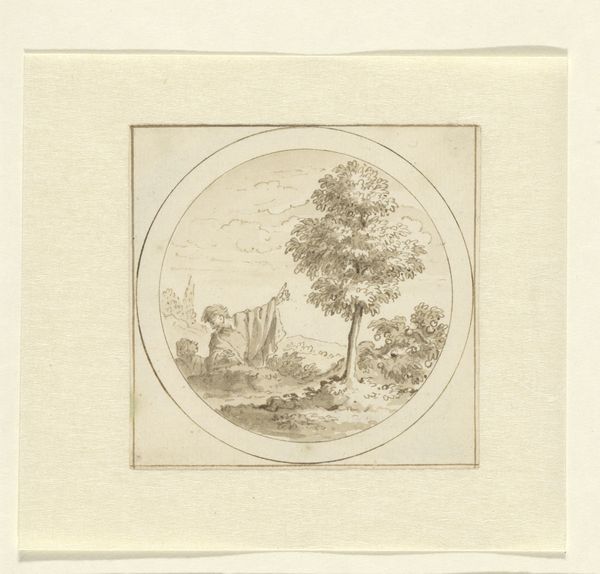
print, engraving
#
baroque
# print
#
landscape
#
engraving
Dimensions: height 99 mm, width 96 mm
Copyright: Rijks Museum: Open Domain
This print, *Herder bij havenstad*, was made in Paris by Nicolas Perelle in the 17th century. It’s an etching, which means the artist coated a copper plate with wax, then scratched an image into the wax, exposing the metal. The plate was then bathed in acid, which bit into the exposed lines. After the wax was removed, the plate could be inked and printed. Look closely, and you can see the characteristic quality of etching, a kind of wiry, almost nervous line, and a complex layering of those lines to create tone and shadow. In this image, the circular composition is meticulously built up, describing a rustic scene of figures near a port. The printmaking process allowed for relatively quick production of multiple images. Etchings like this one existed within a growing commercial marketplace for art, catering to a broader audience than paintings could reach. In a sense, the print is a perfect embodiment of early capitalism – a detailed image, multiplied and distributed, its value residing both in its aesthetic appeal, and in the labor that went into its making. Appreciating the process gives us a richer view of the artwork itself.
Comments
No comments
Be the first to comment and join the conversation on the ultimate creative platform.
